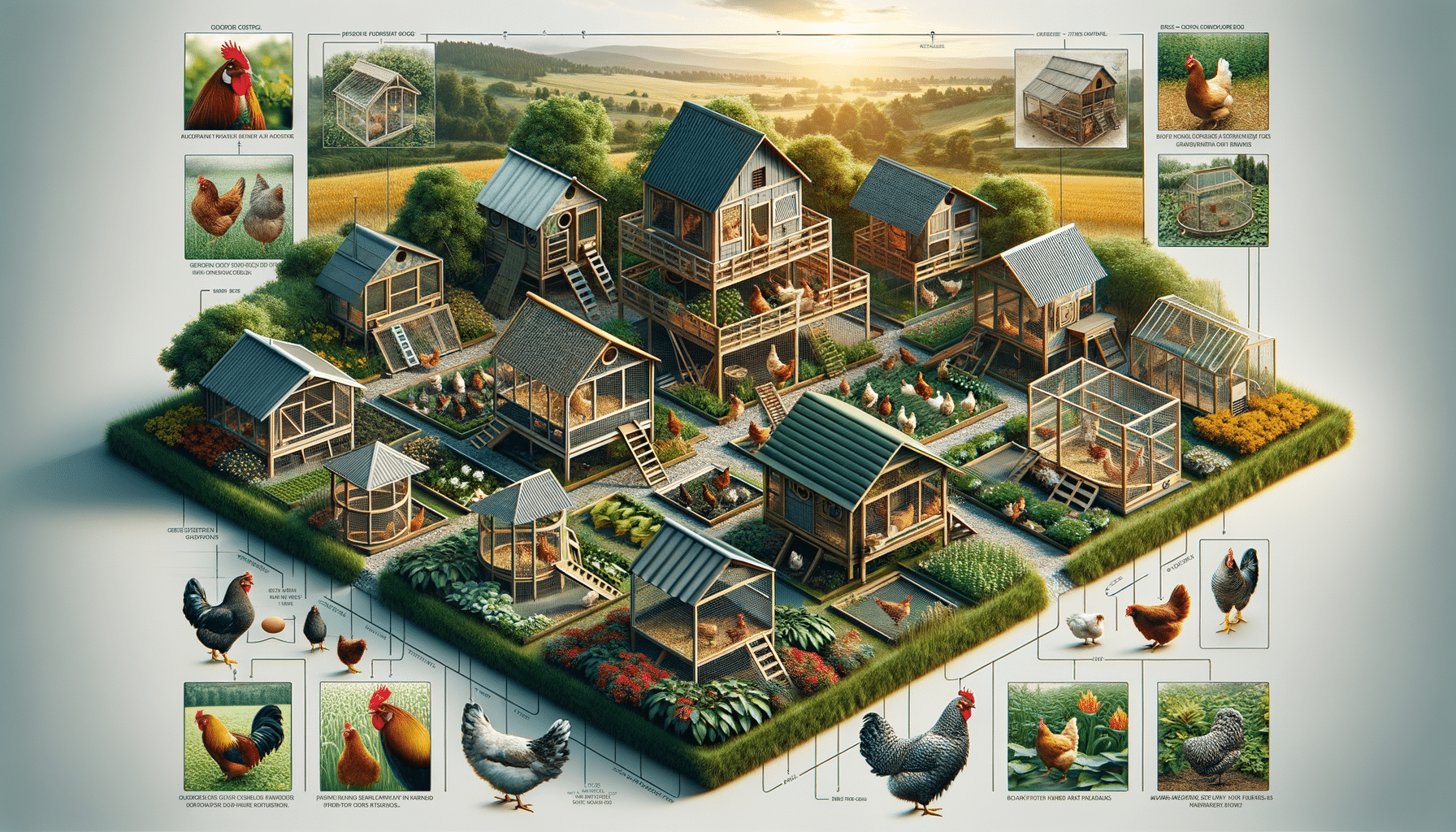
The Essential Guide to Chicken Coops: Building a Safe and Comfortable Home for Your Flock
Introduction to Chicken Coops
Raising chickens has become increasingly popular among homeowners and hobby farmers alike, offering both the satisfaction of self-sufficiency and the benefit of fresh eggs. A critical component of successfully raising chickens is the chicken coop, which serves as a safe haven for your flock. A well-designed chicken coop not only protects your birds from predators but also provides a comfortable space for them to thrive. In this guide, we will explore the essential aspects of chicken coops, from design considerations to maintenance tips, ensuring your feathered friends are happy and healthy.
Designing the Perfect Chicken Coop
The first step in creating an ideal chicken coop is to consider the size and layout. The coop should provide enough space for each chicken to move comfortably, with a general rule of thumb being at least 2-3 square feet per bird inside the coop and 8-10 square feet per bird in an outdoor run. Additionally, incorporating nesting boxes and perches is crucial for the chickens’ well-being.
When designing the coop, ventilation is a key factor. Proper airflow helps prevent moisture buildup, which can lead to respiratory issues and other health problems. Windows or vents should be positioned to allow for cross-ventilation without creating drafts.
Materials used in construction should be durable and weather-resistant. Wood treated with non-toxic sealants is a popular choice, while wire mesh can be used for securing windows and openings to keep predators out. Consider adding a sloped roof to facilitate water runoff and prevent leaks.
Choosing the Right Location
The location of your chicken coop can significantly impact the health and productivity of your flock. Ideally, the coop should be placed on high ground to avoid flooding and ensure good drainage. It’s also beneficial to position the coop in an area that receives morning sunlight, as this can help regulate the chickens’ laying cycles and keep the coop dry.
Proximity to your home is another consideration. Having the coop nearby makes it easier to monitor the chickens and provides quick access for feeding, cleaning, and egg collection. However, it should be far enough away to minimize any potential noise or odor issues.
Lastly, consider the surrounding environment. Providing shade during the hot summer months and protection from harsh winter winds is essential. Planting trees or installing a windbreak can offer natural shelter for your flock.
Essential Features and Accessories
A well-equipped chicken coop should include several essential features to ensure the comfort and safety of your flock. Nesting boxes are necessary for egg-laying, with one box per 3-4 hens typically sufficient. Line the boxes with straw or wood shavings for added comfort.
Perches are another important feature, as chickens prefer to roost off the ground. Install perches at varying heights to accommodate different breeds and preferences. Ensure they are sturdy and positioned away from nesting boxes to prevent contamination.
Additional accessories such as feeders, waterers, and dust baths can enhance the living conditions for your chickens. Automatic feeders and waterers can help maintain a consistent supply of food and water, while a dust bath area allows chickens to keep their feathers clean and free of parasites.
Maintaining a Healthy Chicken Coop
Regular maintenance is crucial for keeping your chicken coop clean and your flock healthy. Daily tasks include checking food and water supplies, collecting eggs, and observing the chickens for any signs of illness or distress.
Weekly or bi-weekly cleaning involves removing old bedding, scrubbing surfaces, and replenishing nesting materials. This helps prevent the buildup of harmful bacteria and parasites. Additionally, inspect the coop for any signs of damage or wear, such as holes or loose wires, and make necessary repairs promptly.
Seasonal maintenance may involve more thorough cleaning and adjustments to accommodate changing weather conditions. In winter, ensure the coop is well-insulated and free from drafts, while in summer, focus on ventilation and shade to keep the chickens cool.


